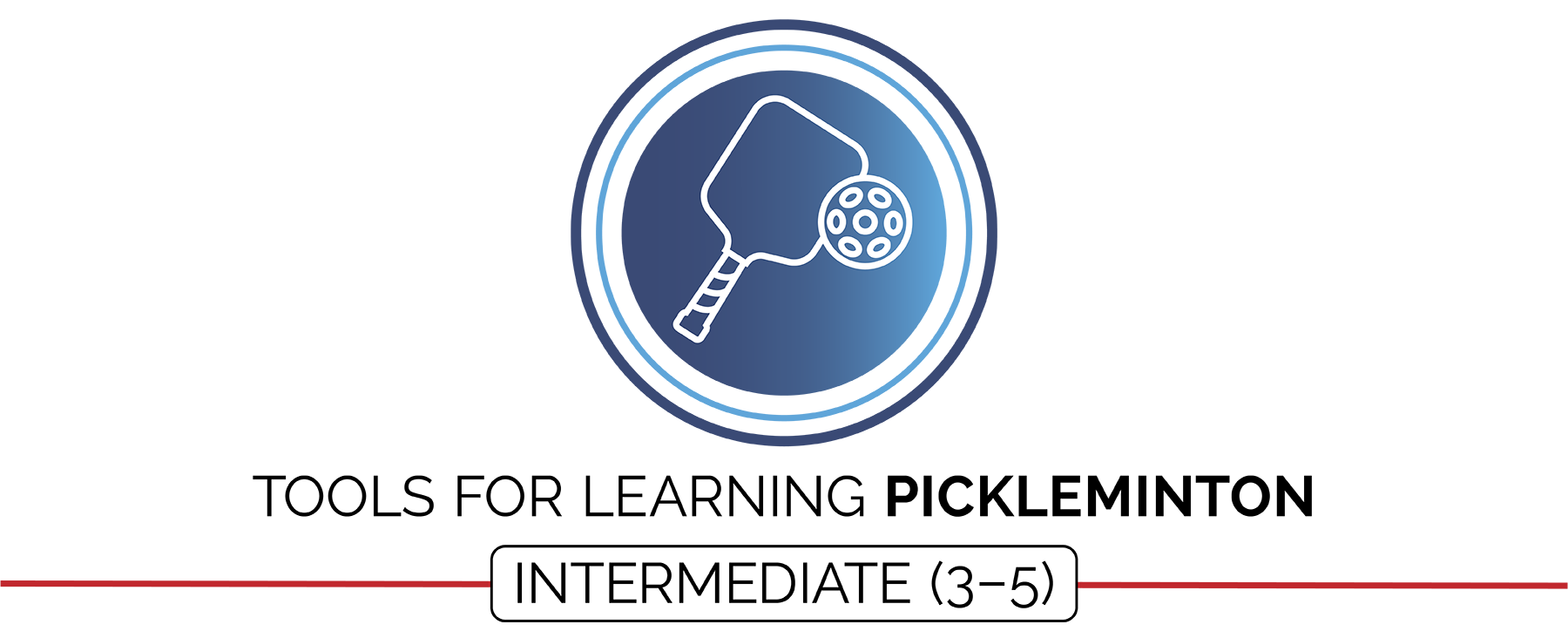Created by: Lisa Kushner, Briana Sullivan, Deedi Brown, Mike Smith, and Aaron Hart
Design: Jennifer Truong
Striking an object with a short-handled implement has never been this fun! This module provides a developmentally appropriate lead-up to net games like pickleball and badminton. Implement this module in full with more skilled students. Or, remove the 1V1/2V2 activities and focus on the basics.
Module Documents
Complete Module Packet:
Module Overview:
Required Materials:
All Module Activities:
Sample Lesson Plan:
Academic Language Cards:
Universal Design Adaptations:
Skill Cue Cards:
Station Cards:
Link to Equipment Pack
Activity Plans
Hello Paddle:
Pancake Flipper:
Birdie in the Cage:
Splat the Spot:
Peer Assessment:
Time to Get SMART:
1V1 Pickleminton:
2V2 Pickleminton:
Station Day:
Assessments
Self-Assessment Worksheet:
Holistic Performance Rubric:
Dual Holistic Performance Rubric:
Academic Language Quiz:
Peer Assessment Worksheet:
SMART Goal Guidelines:
Teacher Evaluation
Teacher Self-Evaluation and Reflection Guide:
Planning Tools
Blank Activity Plan Template:
Blank Lesson Plan Template:
Can’t see the file links? Register for FREE today to access all of the modules. SIGN UP HERE
National Standards and Outcomes Focus for Pickleminton
Standard 1. Demonstrates competency in a variety of motor skills and movement patterns.
- Standard 1 [E6.4]: Combines traveling with manipulative skills of dribbling, throwing, catching, and striking in teacher- and/or student-designed small-sided practice tasks (4).
- Standard 1 [E24.3-5]: Strikes an object with a short-handled implement, sending it forward over a low net or to a wall (3a); Strikes an object with a short-handled implement while demonstrating three of the five critical elements of a mature pattern (3b); Strikes an object with a short-handled implement while demonstrating a mature pattern (4a); Strikes an object with a short-handled implement, alternating hits with a partner over a low net or against a wall (4b); Strikes an object consecutively, with a partner, using a short-handled implement, over a net or against a wall, in either a competitive or cooperative game environment (5).
Standard 2. Applies knowledge of concepts, principles, strategies, and tactics related to movement and performance.
- Standard 2 [E1.3-4]: Recognizes the concept of open spaces in a movement context (3); Applies the concept of open spaces to combination skills involving traveling (e.g., dribbling and traveling) (4a).
- Standard 2 [E3.3-5]: Combines movement concepts (direction, levels, force, time) with skills as directed by the teacher (3); Applies the concepts of direction and force when striking an object with a short-handled implement, sending it toward a designated target (4); Analyzes movement situations and applies movement concepts in small-sided practice tasks (5).
- Standard 2 [E5.5]: Applies basic offensive and defensive strategies/ tactics in net/wall small-sided practice tasks (5b); Recognizes the type of throw, volley, or striking action needed for different games/sports situations (5c).
Standard 3. Demonstrates the knowledge and skills to achieve a health-enhancing level of physical activity and fitness.
- Standard 3 [E1.3b-4]: Identifies physical activity benefits as a way to become healthier (3b); Analyzes opportunities for participating in physical activity outside physical education class (4).
- Standard 3 [E2.3-5]: Engages in the activities of physical education class without teacher prompting (3); Actively engages in the activities of physical education class, both teacher-directed and independent (4); Actively engages in all the activities of physical education (5).
- Standard 3 [E5.3-5]: Demonstrates, with teacher direction, the health-related fitness components (3); Completes fitness assessments (pre- & post-) (4a); Identifies areas of needed remediation from personal test and, with teacher assistance, identifies strategies for progress in those areas (4b); Analyzes results of fitness assessment (pre- & post-), comparing results to fitness components for good health (5a).
Standard 4. Exhibits responsible personal and social behavior that respects self and others.
- Standard 4 [E1.4-5]: Exhibits responsible behavior in independent group situations (4); Engages in physical activity with responsible interpersonal behavior (e.g., peer to peer, student to teacher, student to referee) (5).
- Standard 4 [E2.3-5]: Works independently for extended periods of time (3); Reflects on personal social behavior in physical activity (4); Participates with responsible personal behavior in a variety of physical activity contexts, environments, and facilities (5a); Exhibits respect for self with appropriate behavior while engaging in physical activity (5b).
- Standard 4 [E3.3-5]: Accepts and implements specific corrective teacher feedback (3); Listens respectfully to corrective feedback from others (e.g., peers, adults) (4); Gives corrective feedback respectfully to peers (5).
- Standard 4 [E5.3-4]: Recognizes the role of rules and etiquette in physical activity with peers (3); Exhibits etiquette and adherence to rules in a variety of physical activities (4).

